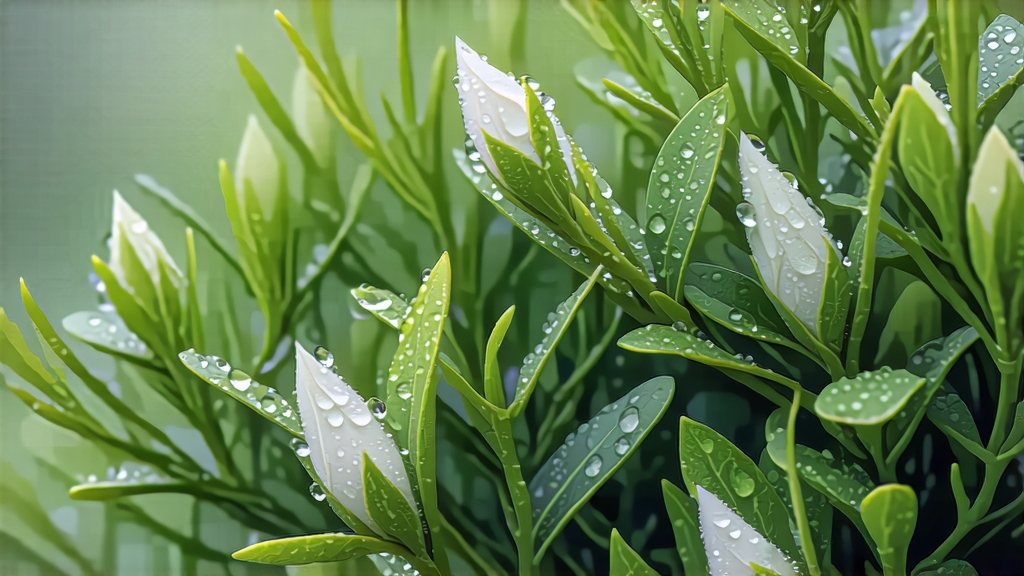
Bai Hao Yin Zhen—literally “White Hair Silver Needle”—is the most aristocratic expression of China’s white tea family. To the uninitiated it may look like a small pile of pale twigs, but in the right teacup it becomes liquid moonlight, a quiet dialogue between terroir and time that has been whispered for almost nine centuries along the northern rim of Fujian province. This essay invites the global tea traveler to listen to that whisper: to understand why a tea made almost entirely of invisible work—patience, weather, and the refusal to intervene—can taste like alpine air dissolved in honey.
-
Historical mist
Song dynasty chronicles first mention “white tablets” presented at the imperial court, yet the modern pedigree of Yin Zhen begins in the 1790s around Tai Lao Shan, the granite spine that separates Fuding from the East China Sea. Legend claims a tea grower named Wei Ji, anxious to deliver spring tribute before the buds over-matured, simply air-dried them overnight instead of roasting. The pale, down-covered tips arrived in Beijing so fragrant that court physicians declared them “cooling to the blood,” and the emperor’s poets compared their shape to sleeping silkworms. Export records from 1891 show Silver Needle loaded alongside porcelain and silk onto clippers bound for London, where Victorian society christened it “China Pekoe Tips” and served it in thin-stemmed glasses so the color could be admired like white burgundy. -
Micro-terroir: two counties, one mountain
Authentic Bai Hao Yin Zhen is picked only in Fuding and neighboring Zhenghe, each side of the ridge offering a different dialect of minerality. Fuding’s red-phased granitic soils drain quickly, forcing the Da Bai Hao cultivar to store amino acids in fat buds; the result is a brighter, jasmine-lifted cup. Zhenghe’s deeper purple soils hold more moisture, encouraging slower growth and a rounder, ripe-peach sweetness. Altitude matters: buds harvested at 400–700 m encounter morning fog that acts as a natural shade cloth, increasing the downy trichomes that protect the tender leaf and later lend the tea its silvery sheen. -
The invisible craft: withering as meditation
White tea is defined less by what is done than by what is left undone. After dawn plucking—only the unopened bud and the imminent first leaf—workers lay the harvest on bamboo trays set at 2 cm depth. For 36 to 48 hours the leaves rest in a shaded corridor where louvered windows invite a choreography of mountain breeze and diffused light. No pan-firing, no rolling, no shaking; enzymes remain alive, oxidizing so slowly that the process borders on suspended animation. Master Chen Lumei, fifth-generation, describes her role as “watching the weather read a book aloud.” If humidity spikes above 75 %, she may slide the trays onto a heated floor kept at 28 °C by charcoal embers buried in ash, but the goal is never to bake—only to persuade. When the moisture falls to 8–10 % the buds feel feather-light and emit a scent of fresh hay and bruised apple; they are boxed for 21 days of “resting oxidation,” a quiet secondary fermentation that softens grassy edges into chamomile and marzipan. -
Grades and myths
Western vendors sometimes market any large white bud as Silver Needle, but Chinese national standard GB/T 22291-2017 is strict: buds must be 100 % intact, 2.5–3.0 cm long, covered with uniform white pubescence, and contain no stems or second leaves. Within that definition lie micro-grades. “King Needle” (Hao Wang) refers to the first three days of spring picking when buds are fattest; “Moonlight Needle” is withered entirely at night under open skylights, yielding a cooler, creamier infusion; “Wild Needle” comes from seed-propagated trees grown without irrigation, prized for a resinous depth reminiscent of pine sap. -
Brewing: the art of negative space
Silver Needle is delicate but not fragile; it rewards spacious brewing. Begin with 4 g of buds—about two heaping teaspoons—in a 200 ml glass pitcher. Use water just off the boil, cooled for two minutes to 85 °C; hotter temperatures scorch trichomes and flatten aroma